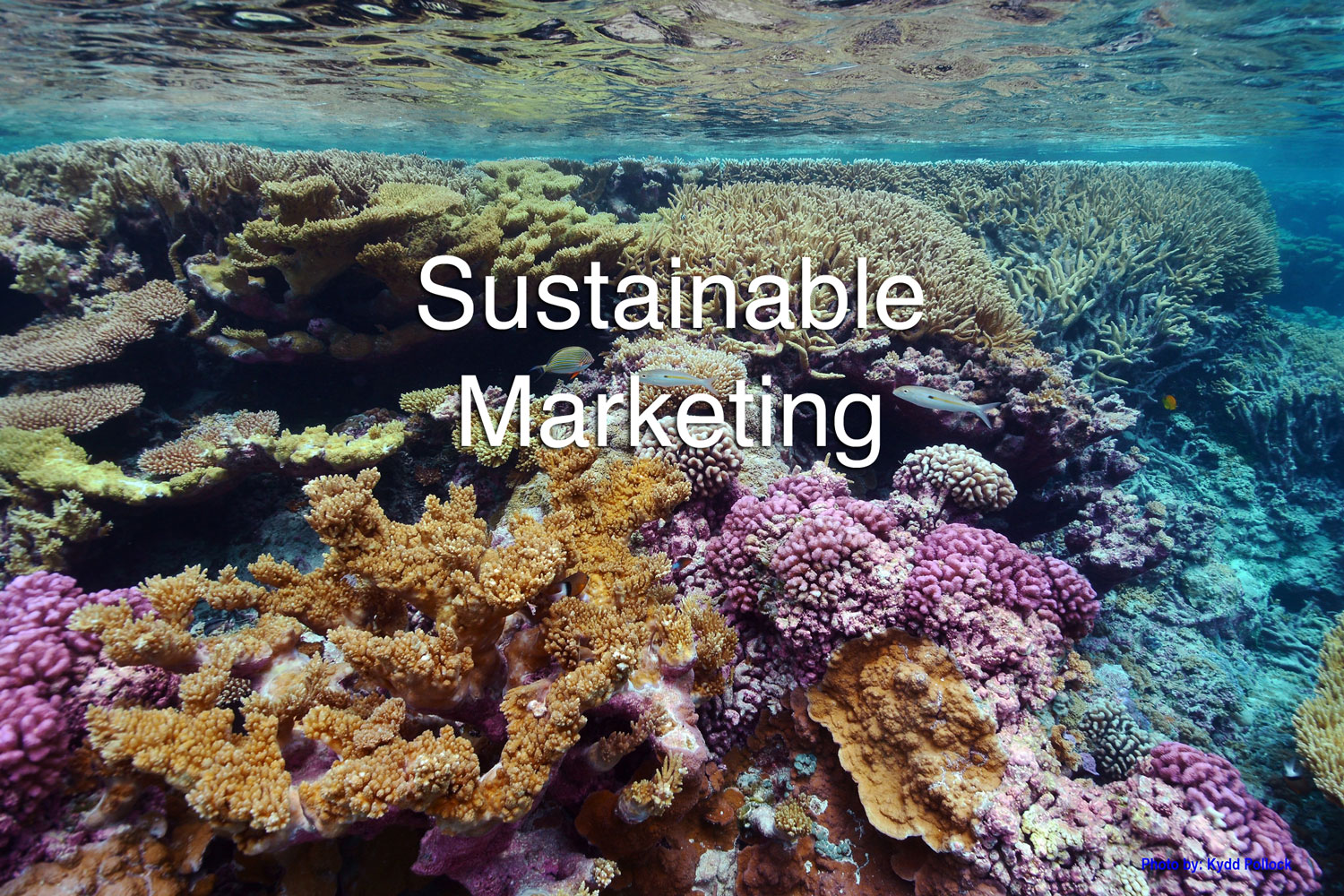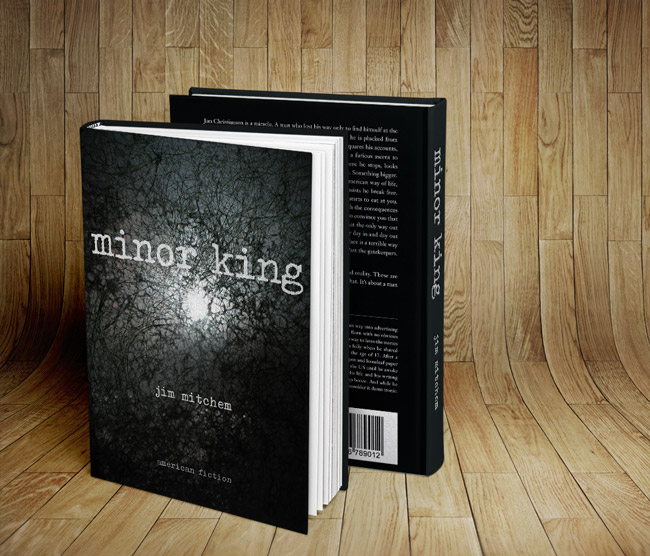
The following is the second post in a three-part series about sustainable marketing. In the first post (here), we defined sustainable marketing, took at look at a case study, and, yes, established my credibility as a qualified voice in this sector. In this post we’ll look at content and why it’s important to share your story with your audience. Click here for the third post in this series.
As we established in the first post of this series, sustainable marketing is based on three primary tenets: content (storytelling), SEO, and distribution.
Time for a Change
When I talk about sustainable marketing with people, I get some interesting responses. Recently someone actually said, “Nobody cares enough about my product for me to adopt a content strategy.”
To which I responded, “Bullshit. Every brand has an audience, otherwise it wouldn’t be in business.”
But the response I get most often is, “We already advertise. We don’t need a different strategy.”
Look, I’m not going to sit here and tell you that advertising is dead. That would be sensationalistic and irresponsible. Traditional advertising isn’t dead. It’s just not as relevant as it once was. Marketing and advertising today means thinking differently. Sustainable marketing is still marketing, after all. A sustainable program doesn’t replace your current marketing scheme. It supports it. And yes, over time, based on the metrics, it can reduce your dependency on traditional marketing and advertising methods.
One of the biggest problems with traditional advertising is that people are inundated by it and, as a result, have become desensitized to it. Thanks to the proliferation of advertising and branding, consumers have learned to ignore most of what they see.
Advertising has always been a disruption, “We’ll be right back after these important messages.” Only now it’s virtually impossible to escape. And believe me, we try. We use DVRs, we pay for satellite radio, and we block internet ads (even on mobile). Sure, salespeople for these media will tell you that their particular platform is still effective. But of course they do! That’s their job. They’ll even have numbers to prove how effective it is.
I just don’t believe those numbers anymore.
I can’t recall any time during the past 10 years when I’ve been enticed to buy or do anything because of advertising.
Maybe that’s because I’m in the business and know the man behind the curtain personally. Or, maybe it’s because a one-way conversation from a brand just isn’t a compelling enough reason for me to act the way the brand wants me to. If my own teenage daughters are any indication, this trend of indifference toward advertising is even more prevalent in younger people. They see what’s happening. Traditional advertising simply doesn’t affect them the way it affected people in the 1990s. If you stick to your traditional guns, good luck marketing in a few years.
So What Do You Do?
You can be honest, that’s what. People today want to hear from brands that are authentic about who they are and the products they make and sell. They want to be told stories. They don’t want you telling them to notice you. They want to feel like they discovered you. And you help them do that through storytelling.
Look, every department within your organization is critical to making your company go. If not, those departments wouldn’t exist. However, did you ever stop to think that every department has a story to tell that contributes to the brand’s promise of value? Probably not. But from R&D to HR, and customer service to sales, the people within your organization have a critical role in making your company go farther. With sustainable marketing, your best brand ambassadors (the people who already work for you) become part of the story the brand shares with its audience.
Back To the Traditional Thing for a Moment.
Traditionally, to reach your audience with marketing you’d hire an ad agency that would find where your audience is, create messages that resonated with them, establish vehicles to carry that message, then launch these vehicles at the audience. Direct mail, television, radio, outdoor, email, banner ads online, the list goes on and on. If you were lucky, they’d work. But only for so long. You see, unless you have an unlimited marketing budget you can’t run a TV spot forever. A billboard only runs for a few weeks. Email gets deleted or flagged as spam. Then what?
Then you’d do it all over again.
And you did it all over again because that’s the way things were always done. You bite the bullet and keep on keeping on. Hoping, wishing, being sure that the bounce you see in sales from the clever campaign your agency deployed will reach higher than ever for a longer period of time. Except, it doesn’t.
Traditional marketing and advertising is unsustainable. Oh, and it’s a one-way conversation with people who are bombarded with advertising and who have learned to ignore it.
I know. It bums me out too. I’m a copywriter. Creating clever ad campaigns was once my speciality. Oh well, everything is in flux. The key is to roll with the changes.
Onward Thru the Fog.
Sustainable marketing is different. But it’s not a new concept. The foundation of sustainable marketing is the same as marketing’s always been—tell a story that engages your audience so that they take favorable action.
A well-conceived and well-executed print ad in a newspaper might get someone’s attention, but does it really engage them? Do they share it with their friends? Does it last more than 24-hours? No. And thanks to our growing indifference to advertising, it’s becoming less and less likely that anyone will even see it, much less engage with it.
However, the content you create and post to your blog or website never disappears and is sharable across digital platforms. Furthermore, because it’s crafted with a goal in mind, and to a specific audience, it’s relevant. Finally, because it’s coming from you, and not an ad agency, it’s authentic.
Granted, television ads during the Super Bowl get talked about. But can you name another time when that happens? Exactly. Plus, I’m guessing that creating and running a Super Bowl ad probably isn’t in your annual marketing budget this year.
Producing relevant, sharable content that reinforces your brand’s promise-of-value helps your audience find you (via search), share the content and engage with you (via social media), and take favorable action (via qualified, inbound leads.)
But We Don’t Have Time To Write Blog Posts. We Have Jobs To Do.
I get it, everyone in your organization is super busy doing their jobs. (No one has any downtime to do things like, I don’t know, check Facebook.) As a result, Sally in HR doesn’t have time to write blog posts for the marketing department.
Except, I believe that she does.
And it’s not for the marketing department. It’s for the company. The brand.
Let’s use Sally as an example. She spends all day looking for the right candidates to fill various positions at your company. Maybe she places an ad and has to sort through hundreds of resumes to find the perfect person for that special role. She schedules and conducts interviews. She’s busy. Really busy. But, she’s also the one person in your company who knows exactly what kind of candidate is a good match both for the open positions, and the corporate culture in general.
The information Sally has in her mind is invaluable. And it’s precisely that kind of information that needs to be shared with your audience. “But I can’t. I’m not a writer, and I simply don’t have the time!” Sally sighs.
Only, with a sustainable marketing program in place, Sally doesn’t have to carry the marketing load herself. She’s just a small, albeit important, part of the overall plan. And you don’t need to be Hemingway to create content that people care about. If Sally were to commit to one 250-word blog post a month, or even a quarter, that could be enough. With important content coming in from different department across the organization, her contribution will be as critical to telling the brand’s story as the CEO’s.
You see, the company is bigger than one department or one person. And it’s certainly bigger than any ad campaign your ad agency creates and distributes.
The purpose of sustainable marketing is the same as traditional marketing—to tell your brand’s story in a way that gets your audience interested, and keeps them engaged. Everyone can find 30 minutes a month to help tell that story. Plus, every post penned by your employees helps make them subject matter experts. Experts who are aligned with your company.
So They Found Us. Now What? How Does This Content Spread?
Let’s say that John, who has 1000s of followers on Twitter, Facebook, and LinkedIn, sees a post by Sally that interests him enough that he shares it in his social network. If the post also resonates with someone who follows John (birds of a feather flock together, after all), and then that person also shares it—who knows how far the content will go?
Sharing is the ripple effect of smart distribution.
And it doesn’t matter when someone sees it. Unlike print ads that disappear in a day (in the case of a newspaper, for example), a blog post lives forever. And the content will be relevant well into the future.
Plus, and this can’t be stressed enough, you can change the content. Let’s say that a post by Sally has a typo that was overlooked in the approval process. You simply go into the post and correct it. Try doing that with a billboard.
In the final post of this series we’ll cover the importance of Google, SEO, and social media, among other things.
In the meantime, visit Smash Communications to learn more about sustainable marketing. And by all means, reach out to me directly to talk about creating a sustainable marketing program for your organization.
Click here for the first post in this series.
Click here for the third post in this series.
***
Jim Mitchem is a writer, consultant, and entrepreneur. He’s been in marketing and advertising a long time. He gets audiences to think differently about things. He published his first novel, Minor King, in 2015, is collaborating on a book called Gone Dogs, and is currently writing a book on sustainable marketing. He has a wife and two daughters. He likes dogs. He really hates writing about himself in third-person.
Image credit USFWS

Sustainable Marketing Explained, Part 1 obsessed with conformity
Oct 6, 2015
[…] Sustainable Marketing Explained, Part 2 .post-nav .post_previous a, .post-nav .icon-left-open{ background: #26495b; } .post-nav […]
Sustainable Marketing Explained, Part 3 obsessed with conformity
Oct 6, 2015
[…] Sustainable Marketing Explained, Part 2 .post-nav .post_previous a, .post-nav .icon-left-open{ background: #26495b; } .post-nav .post_previous a{ color: #ffffff; } .post_previous:hover{ background: rgba(255,255,255,0.2); } .post_previous .sfr-icon-effect:hover .sfr-icon{ box-shadow: 0 0 0 2px #ffffff; } .post_previous a.sfr-icon-effect:hover span.sfr-icon{ background: #ffffff; color: #26495b; } .post_previous .sfr-icon-effect:hover .sfr-icon { box-shadow: 0 0 0 3px #ffffff, 0 0 0 1px #26495b inset; } Jim Mitchem […]